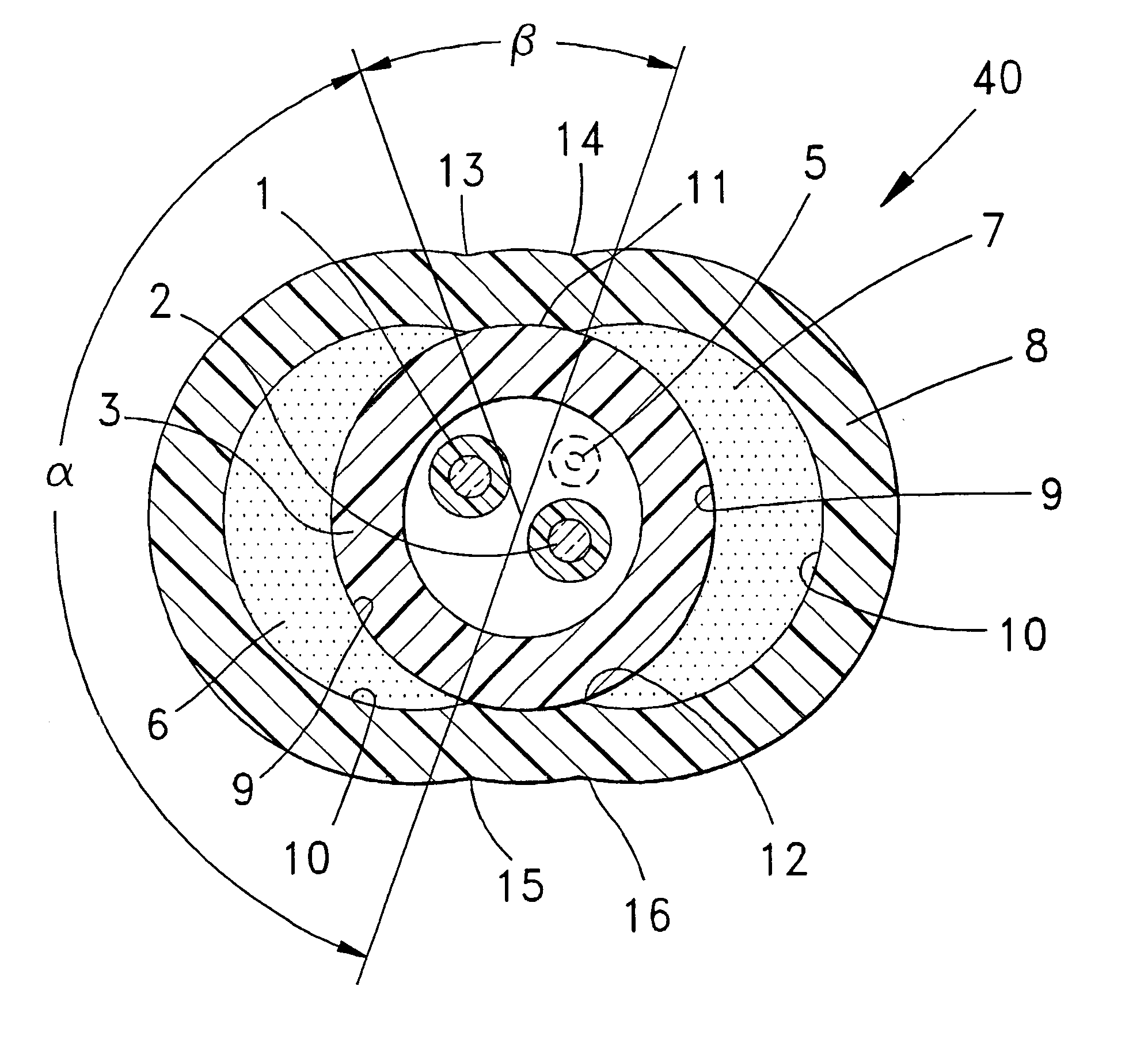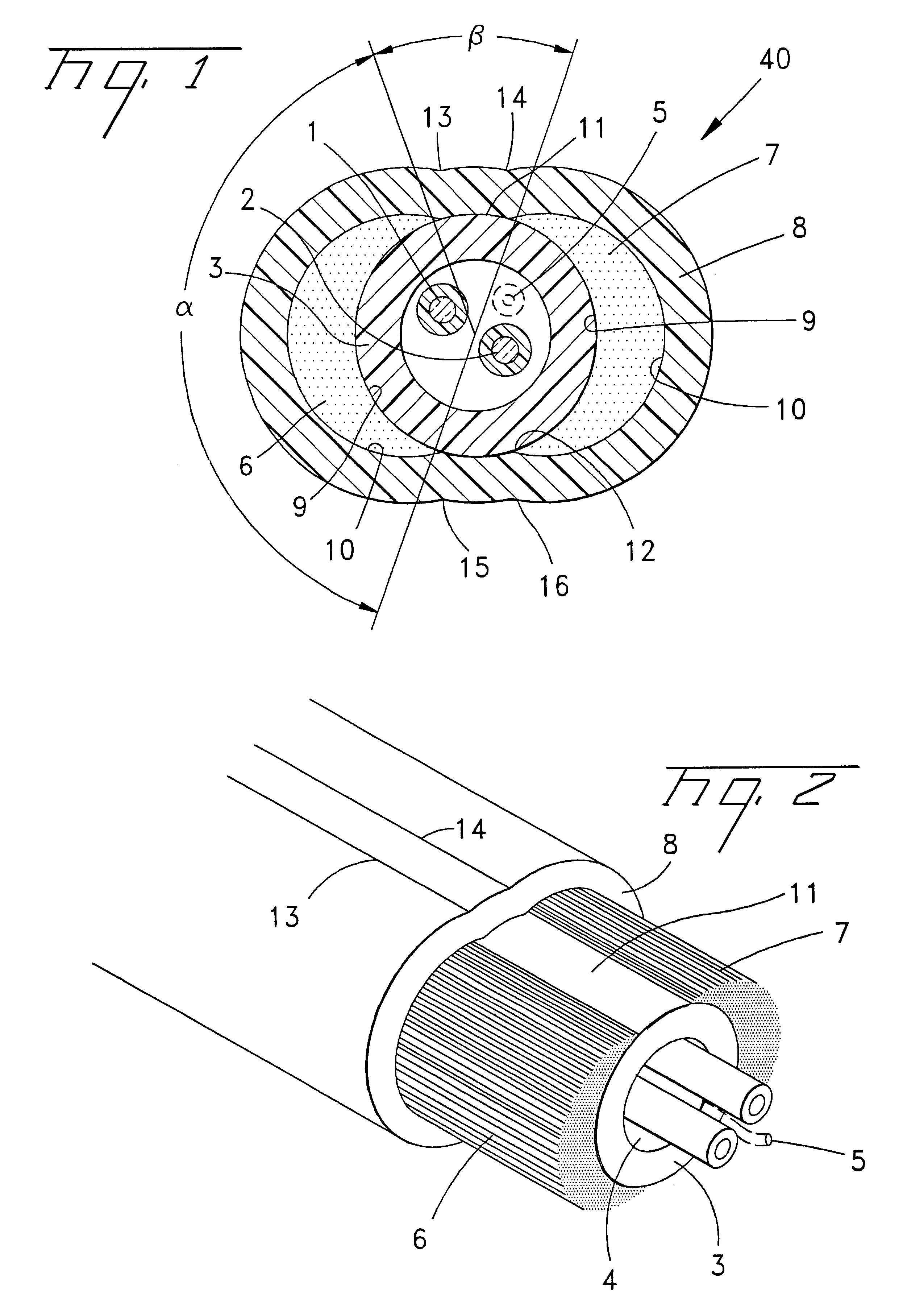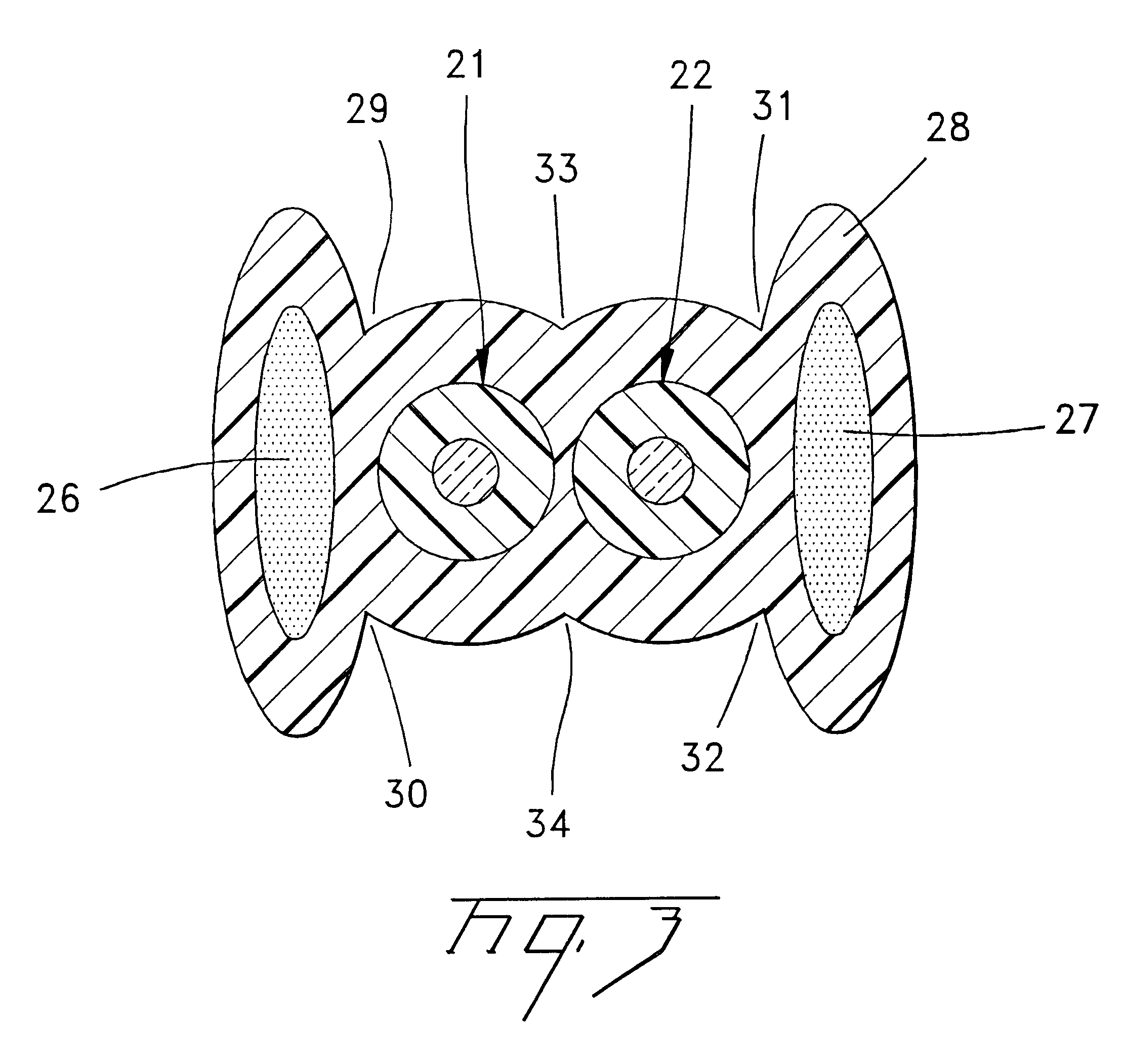Optical cables with flexible strength sections
a technology of optical cables and flexible sections, applied in the direction of cables, insulated conductors, instruments, etc., can solve the problems of relatively large, relatively stiff cables, and high cost of cables
- Summary
- Abstract
- Description
- Claims
- Application Information
AI Technical Summary
Benefits of technology
Problems solved by technology
Method used
Image
Examples
first embodiment
FIGS. 1 and 2 show a fiber optic cable 40 according to the present invention. In a preferred embodiment, fiber optic cable 40 includes an optical component that, for example, includes at least one, but more preferably at least two, silica-based optical fibers loosely received in a buffer tube 3 or tight buffered fibers (not shown). Tube 3 is preferably formed of a theromoplastic material, for example, impact-modified polypropylene or an aromatic polyamide, and is preferably aligned with a generally centrally disposed longitudinal axis of the cable. The preferred ID of tube 3 is about 1.0 mm, and the preferred OD is about 1.8 mm to about 3.0 mm. Preferably there is a controlled excess fiber length compared with the length of the tube to protect the fibers from risk elongation or fracture. Tube 3 preferably includes a water-blocking substance, e.g., a grease or a superabsorbent compound. Super absorbent materials are commercially available in yarn, tape or powder form, and for the pre...
second embodiment
FIG. 3 shows the invention, using tight buffered fibers 21 and 22, for example, about 900 .mu.m OD, with sufficient resistance to tensile forces to be used without a loose enclosing tube. The buffered fibers are directly embedded in jacket 28 that also embeds generally oval strength sections 26 and 27. The strength sections include, for example, aramid fibers or fiberglass. Metallic substances may be used as well, e.g., steel or copper wires or fibers. A transverse dimension of at least one but preferably both of the strength sections is greater than an OD of an optical component 21,22. The transverse dimension is a larger than the optical component by a factor of about 1.10 to about 30, preferably about 1.5 to 20, and most preferably about 2.0 to 10 times the OD of the optical component. The relatively large transverse dimension absorbs clamping forces, and is useful in avoiding the application of direct cable clamping forces to the optical components. Other materials and cross sec...
PUM
 Login to View More
Login to View More Abstract
Description
Claims
Application Information
 Login to View More
Login to View More - R&D
- Intellectual Property
- Life Sciences
- Materials
- Tech Scout
- Unparalleled Data Quality
- Higher Quality Content
- 60% Fewer Hallucinations
Browse by: Latest US Patents, China's latest patents, Technical Efficacy Thesaurus, Application Domain, Technology Topic, Popular Technical Reports.
© 2025 PatSnap. All rights reserved.Legal|Privacy policy|Modern Slavery Act Transparency Statement|Sitemap|About US| Contact US: help@patsnap.com



